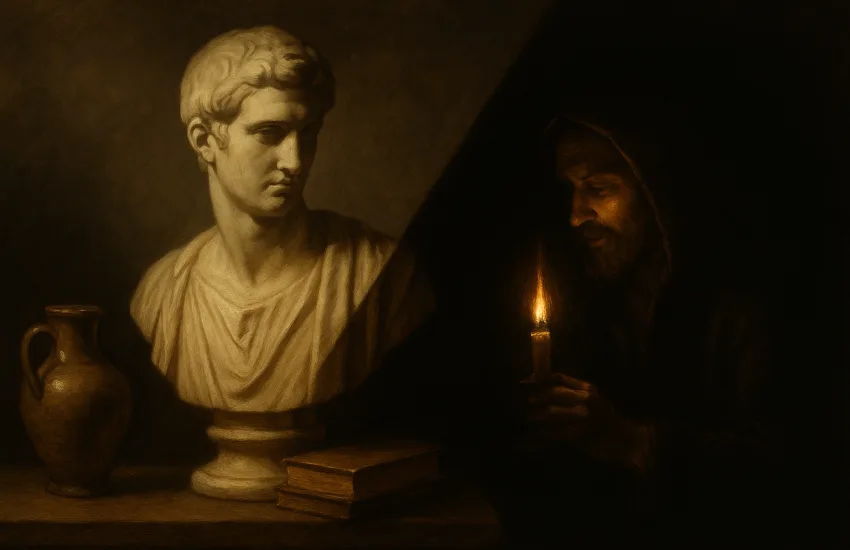The Theme of Death in Art: Momento Mori
The theme of death in art is a fairly common one. Death, which is one of the transitional stages in human life such as birth, marriage and death, has been described by many thinkers, writers, poets and painters throughout history.

The Theme of Death in Art
Death is a very important concept for human life. Death, which is one of the transitional stages in human life such as birth, marriage and death, has been described by many thinkers, writers, poets and painters throughout history.
Every society and individual shapes death, which is an inseparable part of living life. Rituals made to respect the dead also constitute the culture of the society and the way of self-expression. Although in different forms, death is the end of life.
The theme of death is handled in every area of human life. It is possible to see the theme of death in music, painting, theater, literature and many more. From the point of view of art history, it can be seen that works related to death have been produced in almost every period. After all, death is a phenomenon that cannot be separated from human beings.
When thinking about the death theme, the first thing that comes to mind is the Gothic and Renaissance periods. Especially the death of Jesus and his crucifixion are very important in terms of art history. When painting is considered, processing death is based on certain depictions. The prevalence of the painting type known as vanitas is quite high. In addition, there are paintings and sculptures in which he is depicted in rituals such as funerals and laments.

What is Memento Mori? What does vanitas mean?
Memento Mori means “Remember death”. Although the paintings and sculptures in which the thought of Memento Mori are processed are seen as disturbing content, they are very important in terms of meaning. This thought says that worldly goods are temporary, while the soul and idea are permanent. Many artists who adopt this philosophy have started to use symbols that evoke death in their works. It was a common form of depiction, especially among artists who adopted this philosophy with skulls and human skeletons. ‘Vanitas’ is used as another expression of Memento Mori thought. Vanitas means nothing. XVI. With the 19th century, the tradition of painting called Vanitas, dealing with death objects, has developed.
Objects used in Vanitas paintings and their meanings
The skull figure, which is frequently encountered in Vanitas paintings, represents death. [1]
While the extinguished candle represents the brevity of life, the burning candle is used as the symbol of Jesus dispelling the darkness.
While rotten fruits symbolize the decay of the body, the hourglass symbolizes the flow of life.
The king’s crown, which is another figure we encounter in the paintings, is seen as a depiction of the spiritual emptiness.
“Objects such as skull, extinguished candle, withered flower, hourglass, which are commonly used in vanitas paintings, depict the transience of time and worldly pleasures.” Another symbol used in paintings is the dried flower. is the desirability of its description. Another circumstance that accompanies this care is the selection of objects.” [2]


For example, in the Vanitas paintings by Hendrick Andriessen you see above, the skulls that attract attention at first glance are depicted with a laurel crown. Plants such as spike, laurel, and acorn in Vanitas paintings are indicators of immortality, and this representation dates back to Ancient Greek myths. According to myths, “The beautiful nympha Daphne, the daughter of the Peneus River, escapes from men because she dedicates herself to the Goddess Gaia. However, God Apollon , fell in love with Daphne and chased after her.
Begging for her salvation, Daphne has turned into a laurel tree. God Apollo, who was affected by this event, adopted the laurel tree as a sacred tree and made a chin from its branches” (Gürel, Muter, 2007:543). As Daphne transforms into a tree and reaches a new life cycle, her skull with a laurel wreath symbolizes a transformation, not an extinction.”[3] At the same time, the skulls are depicted with an ambiguous identity, an indication that death exists for all mortals.
The Theme of Death in Contemporary Art



We see butterflies and fruits in the foreground in Damien Hirst’s work titled Love and Outside of Love, which is given above. The theme of death, which also takes place in contemporary art, now comes to the fore in performance arts and live shows. While butterflies in Hirst’s work show the transience of life, fruit likewise depicts the body’s decay and transience after death. As it is seen, the death theme did not affect only one period. In different periods, death was handled in different depictions by different artists.
Sources:



